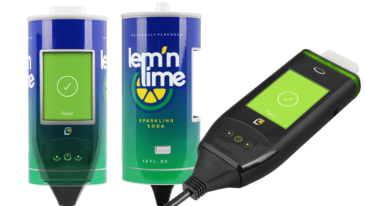
What is Low Risk Drinking?
Most adults have experienced the short-term effects of alcohol firsthand—slurred speech, decreased motor function, an inability to think rationally. Long-term health effects, spurring from prolonged abuse, increase the risk of cardiovascular disease, liver degeneration, and various other health problems. Point being: when abused, alcohol can wreak havoc on our bodies, pushing us towards alcoholism.
So, how does one drink responsibly?
Enter “low-risk” drinking.
Low Risk Drinking is not entirely “risk-free,” but it does provide guidelines to lower the risk of any health issues from ever surfacing from alcohol use. In America alone, it’s estimated that 16 million people suffer from Alcohol Use Disorder (AUD).
“Low-Risk” Limitations
Low Risk Drinking limits are preventative measures—put in place to foster a healthy relationship between a drinker and alcohol—that establish strict guidelines for you to follow. By adhering to the guidelines, you’re able to drink alcohol in a way that won’t put strain on your organ systems, nor will it increase your chances of developing AUD. It’s about drinking responsibly. To that end, we constantly hear the phrase “drink responsibly” thrown about by alcohol brands trying to advertise their product(s).
Yet, rarely are we told how to do so.
Worry not. Below are some of the common guidelines imposed by Low Risk Drinking programs.
Male Guidelines
Men are (typically) built larger than women. They weigh more, thus they have more mass, which means they have a higher concentration of water, too (70% vs 60%). In layman’s terms, this means that—generally speaking—men have a higher tolerance to alcohol than women do. In which case, the National Institute on Alcohol Abuse and Alcoholism has provided the following guidelines for Low Risk Drinking:
- Men should not consume more than four standard drinks a day
- Men should have no more than 14 drinks a week
- Men should spend two days of the week alcohol-free
Female Guidelines
Studies have shown that women produce a smaller volume of ADH (alcohol dehydrogenase), which is an enzyme released in the liver responsible for breaking down alcohol. This phenomenon, combined with the fact that women have more body fat and less body water, means that the physiological effects of alcohol are strengthened on the female figure. In which case, their Low Risk Drinking guidelines differ from that of males’:
- Women should not consume more than three standard drinks a day
- Women should have no more than 7 per week
- Women should spend two days of the week alcohol-free
What is a Standard Drink?
This question may appear convoluted but it’s rather straightforward. A standard drink in America includes 14 grams of pure alcohol, which you can find in:
- One 12oz regular beer (about 5% alcohol)
- 8-9oz of malt liquor (about 7% alcohol)
- 5oz of wine (about 12% alcohol)
- 1.5oz shot of hard liquor (about 40% alcohol)
What’s important to keep in mind is not every restaurant or bar you go to will pour a standard drink. A vast majority of establishments that pour alcohol tend to pour more than what the National Institute on Alcohol Abuse and Alcoholism classifies as your “standard.”
However, no matter how close you adhere to it, the following guidelines provide the framework to create healthy drinking patterns to reduce health risks. In truth, not consuming more than 3-4 standard drinks a day, with a cap of 7 or 14 throughout the week is great practice. Unfortunately, we’re living in an overindulgent society where drinking is often the fabric in social situations.
Add in the lack of education and that’s why many drinkers are “high-risk,” rather than the opposite.
Low Risk Drinking and Driving
Regardless if you adopt Low Risk Drinking, know that drinking and driving is always a HIGH-risk situation. Despite how little one drank prior to sitting behind the wheel, or if they have full awareness and cognition, any mistake—in the eyes of the law—is going to be counted as a DUI, and you’ll be required to install a car breathalyzer. Point being: monitoring your drinking and continuing to drive should never be a possibility. With zero tolerance in effect, even that one beer you drink could land you in criminal, legal, and financial trouble.
If even a touch of alcohol is in your system and you’re operating a vehicle, you and others are at risk.
Healthy Drinking
Alcohol can be found in nearly every facet of society. Friends, family, coworkers—everyone drinks. The point is to create a healthy relationship with alcohol that mitigates the chances of AUD or any health complications and problems surfacing. By staying educated, self-aware, and counting your drinks, you’re ensuring that this potentially harmful substance never affects you negatively.
That is the true meaning of “drinking responsibly.”
Sources:
Mayo Clinic. Alcohol Use Disorder. July 11, 2018.
https://www.mayoclinic.org/diseases-conditions/alcohol-use-disorder/symptoms-causes/syc-20369243
BBC. Why Alcohol Affects Women More Than Men. June 18, 2018.
http://www.bbc.com/future/story/20180618-why-alcohol-affects-women-more-than-men
National Institute on Alcohol Abuse and Alcoholism. Drinking Levels Defined.
https://www.niaaa.nih.gov/alcohol-health/overview-alcohol-consumption/moderate-binge-drinking
HereToHelp. Drinking Guidelines, Supporting Health and Life.
https://www.heretohelp.bc.ca/factsheet/drinking-guidelines-supporting-health-and-life


